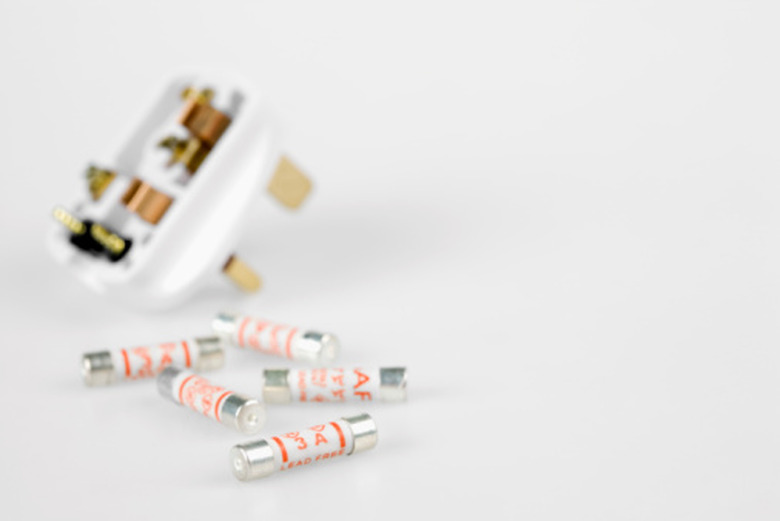How To Test A Ceramic Fuse
Ceramic fuses act as a safety device that interrupts the electrical power supply when electrical overloads or surges occur. Internal, thin, wire filaments melt and stop the electrical current to prevent harm to an appliance or other electrical device. A homeowner can determine if a glass fuse in blown by performing a visual inspection and looking for a break in the thin wire and a brown discoloration in the center of the fuse. A ceramic fuse, however, shows no damage upon visual inspection. Testing a ceramic fuse is the only way to tell if the fuse has blown.
Step 1
Turn off the power supply to the appliance or other electrical device if the device is hard-wired. If the appliance has a plug, unplug the power cord.
Step 2
Set an ohmmeter or multimeter dial to zero. Multimeters read both volts and ohms. If you are using a multimeter, set the multimeter to the ohm setting.
Step 3
Touch one end of the fuse terminal with the black test probe and the other end of the fuse terminal with the red test probe.
Step 4
Read the ohmmeter display. If the display shows the needle at zero or the digital display shows zero, the fuse is in good working condition. Any other reading above zero indicates the fuse is no longer working and has blown.
Tip
If the ceramic fuse has blown, inspect the appliance's electrical circuitry to determine the cause of the blown fuse. Some fuses blow due to a power surge or age, while others blow because of electrical problems with the appliance or electrical device.
Warning
Do not attempt to test ceramic fuses when the power supply is connected; the current can cause physical harm to the tester and the meter.
References
- "Home Repair and Improvement"; Creative Homeowner Editors; 2006
- "Basic Wiring"; Time-Life Editors; 1989
